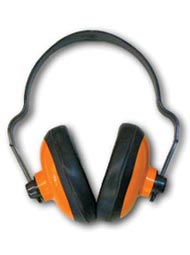OHS practices - Work environment
Personal protective equipment (PPE)
Personal protective equipment (PPE) describes any piece of clothing or equipment which is worn to protect parts of the body while you work on jobs that pose some kind of hazard.
PPE is not designed to control the hazard; it is there to add some type of protection.
The use of PPE is often seen as a cost effective means to protect workers. However, this measure of control has problems that usually result in the worker not being adequately protected.
Some types of PPE and their use are shown in the following table.
PPE |
Use |
|---|---|
| Safety glasses | Protect eyes from debris. |
| Overalls | Protect against fluids, chemicals and sparks causing damage to clothing and skin. |
| Gloves | Protects hands from fluids / chemicals and burns. |
| Helmet | Protects the head from falling objects and low beams. |
| Face shield | Protects eyes and face from flying materials created when grinding or drilling. |
| Steel-capped boots | Protect feet / toes from injury caused by dropping heavy objects. |
| Ear muff / plugs | Used to reduce hearing damage caused by loud noises. |
| Respirator | Protects lungs from inhalation of dust, fumes. |
| Leather apron | Protects body and clothing from burns generated from welding. |
| Leather gloves | Protect hands and arms from burns generated from welding. |
| Welding mask / goggles | Protect eyes from damage from welding. |
| Cap / hair net | Reduces the risk of hair being caught in equipment such as pedestal drills. |


Ear muffs and face shield



